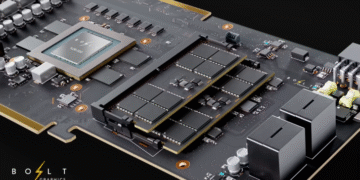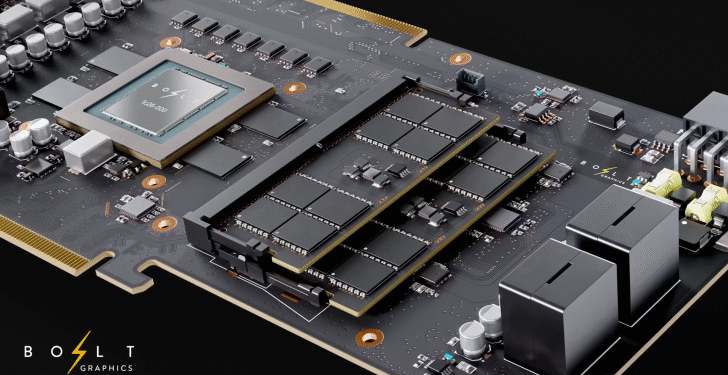Login to Continue Learning
[Ad_1]
Bolt Graphics has surprised the market with their Zeus GPU, which is set to use laptop memory and leave current-gen options behind.
If It Becomes Reality, Zeus GPU Will Be the First Current-Gen GPU to Offer Expandable Memory
When it comes to competing with mainstream GPUs, startups often make bold claims but rarely deliver a viable solution. Bolt Graphics aims to change this with their Zeus GPU, which they plan to introduce in 2027. According to the company, the Zeus GPU will feature expandable memory, up to 384 GB, and other impressive specifications.
Here are some key features of the Zeus GPU:
– Expandable memory: 32/64/128 GB soldered + 2x or 4x SO-DIMM slots for up to 384 GB
– Significant improvements in path tracing performance
– A 400 GbE QSFP-DD port
– Built-in high-performance RISC-V CPU cores
The company is using DDR5 SO-DIMM slots instead of traditional GDDR options, allowing consumers to upgrade their memory. However, this announcement raises questions about the power requirements and thermal management of such a powerful GPU.
Based on the specifications, the Zeus GPU would have a high TDP rating but reportedly be powered by only an 8-pin PCIe connector providing around 120W. This discrepancy suggests either a PR stunt or a breakthrough in technology that rivals from NVIDIA and AMD haven’t achieved.
In pre-silicon benchmarks, the Zeus GPU is claimed to outperform the RTX 5090 tenfold in rendering tasks with full-quality 4K path-traced graphics. While these numbers are optimistic, they do seem ambitious. Additionally, having an RJ45 port on a GPU is unusual, leading me to doubt that the Zeus GPU will be a full-scale consumer solution anytime soon.
[Ad_2]
📚 Reading Comprehension Quiz
According to the passage, what is a unique feature of the Zeus GPU that sets it apart from current-gen GPUs?
Please login or register to take the quiz and earn points!



















